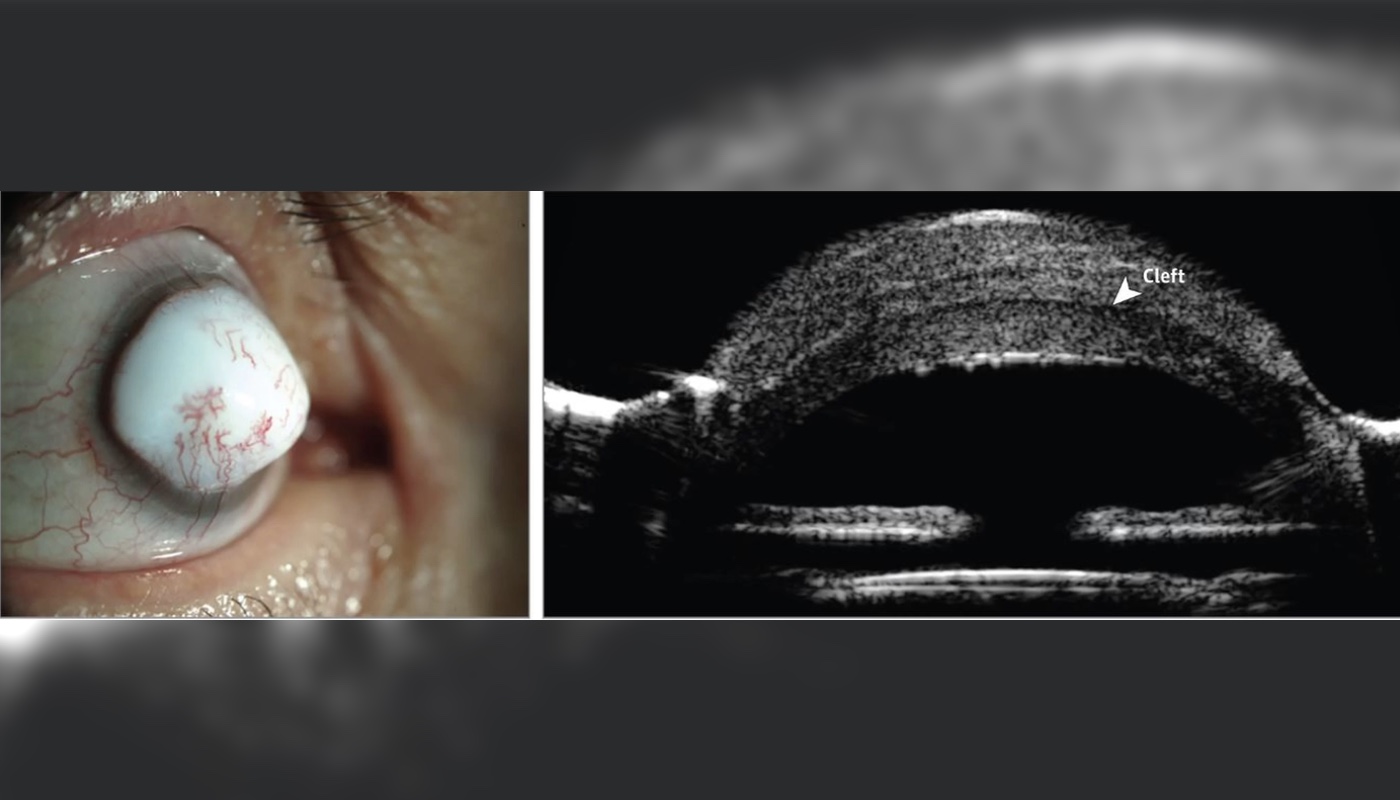Here's Why This Man Had a Giant White Mass on His Eyeball

It looks like a Hollywood special effect: An eye with a bulging white mass where the pupil and iris should be. But this odd eye problem is the result of a rare lesion on a man's eyeball, according to a new report of the case.
The 74-year-old man arrived at an eye clinic with a pearly white, jelly-like mass on his right eye, according to the report, published April 4 in the journal JAMA Ophthalmology. The man told his doctors that two years earlier, he'd had cataract surgery on his right eye. Afterward, he'd noticed a scar on his cornea — the clear, dome-shaped surface that covers the front of the eyeball — that gradually thickened over the next six months, the report said. ['Eye' Can't Look: 9 Eyeball Injuries That Will Make You Squirm]
His vision in the right eye was very poor — too poor to see an eye chart, although he could tell when doctors moved their hands in front of his eye.
Doctors performed a procedure to remove the mass and examined some of the eye cells under a microscope.
Test results showed that the man had a "corneal keloid," a rare type of lesion on the cornea, according to the authors of the report, led by Dr. Nikolas Raufi, an ophthalmologist at Duke Eye Center in Durham, North Carolina.
A corneal keloid is "an extremely rare, abnormal growth of tissues that is like scar tissue" on the cornea, said Dr. John Hovanesian, a clinical spokesperson for the American Academy of Ophthalmology (AAO) and an ophthalmologist at Harvard Eye Associates in Laguna Hills, California. Indeed, it's so rare that, more than a century since it was first identified, fewer than 100 cases have ever been reported, Hovanesian told Live Science.
And this man's case was even more unusual, given his age — most cases of corneal keloids occur in the first three decades of life, according to the AAO.
Sign up for the Live Science daily newsletter now
Get the world’s most fascinating discoveries delivered straight to your inbox.
Some people are born with conditions that can cause corneal keloids to develop in both eyes. But the condition can also occur after an eye infection or trauma, including eye surgery, such as cataract surgery, the AAO said.
Hovanesian, who wasn't involved with the man's case, noted that corneal keloids are different from keloids of the skin, the latter of which is a type of raised scar that sits as a bump above the skin. Although the same word is used in the names of these conditions, "we think they're very different diseases," Hovanesian said. Corneal keloids are much rarer than skin keloids — even people who are prone to developing skin keloids aren't at increased risk of corneal keloids after certain eye surgeries, studies have found.
It's unclear why corneal keloids form. But Hovanesian said the cornea has an "amazing molecular organization" that allows it to be crystal clear. But when the same tissue grows in a disorganized way, the cornea becomes whitish, he said.
Still, Hovanesian stressed that "it's extremely rare to have this type of complication" after eye surgery. "Many ophthalmologists have never seen a corneal keloid because it's such a rare thing."
After the procedure to remove the lesion, the man said he felt like he was doing well, although he still couldn't see well enough out of his right eye to view an eye chart. He also had an abnormal growth of blood vessels in his eye, and his cornea appeared cloudy. The man will be monitored for a possible recurrence of the lesion, the report said.
- 27 Oddest Medical Case Reports
- 25 Medical Myths That Just Won't Go Away
- 11 Weird Things People Have Swallowed
Originally published on Live Science.

Rachael is a Live Science contributor, and was a former channel editor and senior writer for Live Science between 2010 and 2022. She has a master's degree in journalism from New York University's Science, Health and Environmental Reporting Program. She also holds a B.S. in molecular biology and an M.S. in biology from the University of California, San Diego. Her work has appeared in Scienceline, The Washington Post and Scientific American.










